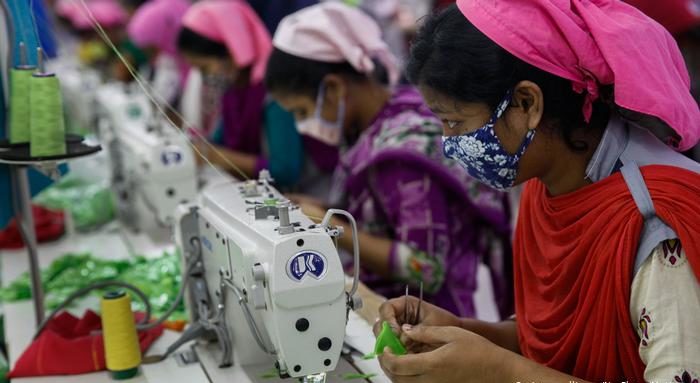Back to: HOME ECONOMICS JSS1
Welcome to class!
In today’s class, we will be talking about the production of clothing and household articles/ crafts. Enjoy the class!
Production of Clothing and Household Articles/ Crafts

Garment production is an organized activity consisting of sequential processes such as laying, marking, cutting, stitching, checking, finishing, pressing and packaging. This is a process of converting raw materials into finished products. It will be difficult to maintain the industry if production is not, up to the mark if the preproduction phase of preparation of material is not properly carried out.
Ready to wear apparel or garment manufacturing involves many processing steps, beginning with the idea or design concept and ending with a finished product.
The apparel manufacturing process involves Product Design, Fabric Selection and Inspection, Pattern-making, Grading, Marking, Spreading, Cutting, Bundling, Sewing, Pressing or Folding, Finishing and Detailing, Dyeing and Washing, etc.
Household articles and crafts are items or crafts that can be produced for personal use, for the home or even for sale. Some of these crafts can be used for decoration of self or the home.
Household goods are goods and products used within the household. They are the tangible and movable personal property placed in the living rooms, dining rooms, kitchens, bedrooms, bathrooms, basements and other rooms of a house.
Examples of household goods include air conditioner, baby items, baking dishes, beds/bed-frames, blankets, bedding, linens, towels, blender, mixers, bookcases, dressers, wardrobes, cloth dryers, coffee maker, computer, cooking utensils, couches, sofas, sofa beds, curtains,
Manufacturing steps
Receiving fabrics:
Garment factories receive fabric from overseas textile manufacturers in large bolts with cardboard or plastic centre tubes or in piles or bags. The fabric typically arrives in steel commercial shipping containers and is unloaded with a forklift. Garment factories often have a warehouse or dedicated area to store fabric between arrival and manufacturing.
Fabric relaxing:
“Relaxing” refers to the process that allows the material to relax and contract before being manufactured. This step is necessary because the material is continually under tension throughout the various stages of the textile manufacturing process, including weaving, dyeing, and other finishing processes. The relaxing process allows fabrics to shrink so that further shrinkage during customer use is minimized.
Spreading, form layout, and cutting:
After the fabric has been relaxed, it is transferred to the spreading and cutting area of the garment manufacturing facility. The fabric is first to cut into uniform plies and then spread either manually or using a computer-controlled system in preparation for the cutting process. The fabric is spread to:
- allow operators to identify fabric defects;
- control the tension and slack of the fabric during cutting; and
- ensure each ply is accurately aligned on top of the others.
Laying:
Laying of paper pattern helps one to plan the placement of the pattern pieces in a tentative manner.
- Lay large pieces first and then fit in the smaller ones
- It is very economical in laying the pattern and cutting. Even a small amount of material saved in a single layer will help to bring about a large saving of money as hundreds of layers of fabric will be laid and cut simultaneously.
Marking:
This can be a manual or a computerized technique
- The marker planner uses full-size patterns and economically arranges them on marker paper.
- This is a specially printed paper having symbols on it which enable the marker planner to visually control the positioning of components according to specified grain lines.
- Markers produced on paper are fixed to fabric with pins, staples or on an adhesive paper which is heat-sealed to the top layer of the fabric.
Cutting:
This is the major operation of the cutting room when they spread and cut into garments. Of all the operations in the cutting room, this is the most decisive, because once the fabric has been cut, very little can be done to rectify serious defects.
Sewing:
Stitching or sewing is done after the cut pieces are bundled according to size, colour and quantities determined by the sewing room.
Checking:
It is realistic to assume that however well checking or quality control procedures operate within a factory there will always be a certain percentage of garments rejected for some reason or other.
In our next class, we will be talking about the Production of Cleaning Agents. We hope you enjoyed the class.
Should you have any further question, feel free to ask in the comment section below and trust us to respond as soon as possible.
